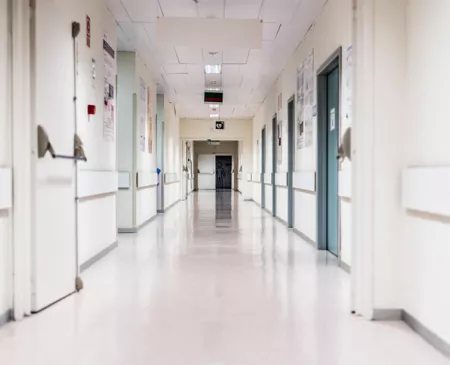The Buzz This Week
Community Health Centers (CHCs) and other Federally Qualified Health Centers (FQHCs) have served as critical sources of healthcare for low-income, minority, and rural populations within the American healthcare system. Though the problems they are facing (such as poor financial performance and staffing shortages) are ubiquitous to the healthcare industry, CHCs and other FQHCs are facing greater difficulties than many other healthcare provider organizations following the end of the COVID-19 Public Health Emergency (PHE).
FQHCs are defined as “federally funded health centers or clinics that serve medically underserved areas and populations, providing primary care services regardless of ability to pay” and include CHCs, migrant health centers, centers for the homeless, and health centers for residents of public housing. These health centers were established with the goal of increasing access to affordable healthcare in low-income and medically underserved communities, and they rely heavily on Medicaid reimbursement and federal grant funds to operate. According to recent reports by The Commonwealth Fund, more than 13,000 service sites serve 30 million patients, including 13 million patients living in poverty, 6 million uninsured patients, and 1 million patients experiencing homelessness.
In some cases, academic medical centers (AMCs) and large health systems (such as Boston Medical Center, Kaiser Permanente, and Duke University Health) partner with CHCs and other FQHCs. In these types of partnerships, hospitals send some physicians and residents to the centers, where they gain a more diversified clinical experience. The health centers benefit from additional clinical support and, in many cases, a small variable clinical teaching payment to account for the cost of integrating a clinical teaching program and residents into their operations. Patients also benefit from these partnerships, with improved access to care from a broader spectrum of specialists, which has been shown to improve health equity and reduce health disparities.
Though not a new problem, these centers and clinics are currently under significant financial duress, exacerbated by the end of the PHE, which scaled back certain pandemic relief funding, and by the reinstitution of Medicaid redeterminations, which put many Medicaid beneficiaries at risk of losing coverage. It is estimated that FQHCs care for 1 in 6 Medicaid beneficiaries. Roughly 15 million people are expected to lose coverage over the next 13 months—and approximately 45% of the people disenrolled will still be eligible for Medicaid or some other program. The National Association of Community Health Centers (NACHC) found that 85% of the 420 CHCs recently surveyed will face financial and operational strain due to the unwinding of increased Medicaid coverage. More than 50% expect to reduce staffing and scale back some services.
Why It Matters
CHCs and other FQHCs serve as safety net providers for underserved communities and are critical for addressing health disparities. Disruptions in care due to coverage gaps or scaled-back services could result in more severe disease that requires more costly treatments, unmet healthcare and medication needs, visits to increasingly overcrowded emergency rooms, or hospital stays.
The nation’s healthcare safety net system is essential but fragile. Options that CHCs and other FQHCs should consider to stay afloat include:
- Aid in Medicaid reenrollment: To stave off the anticipated decline in Medicaid beneficiaries due to the return to Medicaid redeterminations, health centers can increase communication and education efforts with patients around enrollment eligibility. They also can support them in the enrollment process or help them find alternative insurance coverage options. This support can come directly through the care centers via patient navigators and other trained staff members, as well as through community entities (such as community centers and religious organizations). Communication and education can take many forms beyond in-person sessions (including mailings, videos, and social media).
- Accessing government funding and other grants: Though not an easy path to navigate, these health centers can access a variety of government and private grants to support their mission and operations. For example, a group of FQHCs in Connecticut is requesting $32 million from the state to be divided among 17 facilities to prevent services from being scaled back. Additionally, Sen. Bernie Sanders introduced a package that would provide $130 billion for community health centers over 5 years.
- Augmenting partnerships with teaching hospitals and health systems: Collaboration between large or academic health systems and FQHCs can take many forms. In addition to provider and residency rotations, transferring a hospital clinic to an existing FQHC, or setting up specialist or referral agreements, reduces hospital Emergency Department visits and admissions. These activities also provide services patients at FQHCs would otherwise not access—significantly increasing health outcomes in these underserved communities and enhancing community presence and patient relationships for the health system. However, these collaborations are unique, with very specific regulatory requirements at both the state and federal level that providers need to be aware of.
- Collaborating with community organizations: Partnering with local organizations such as law firms or other public health groups can bring necessary services to both the staff and patients of these clinics. Medical-legal partnership teams often detect patterns in patients’ needs that reveal opportunities to advance policy solutions for whole communities. Studies show that when legal expertise and services are used to address social needs, people with chronic illnesses are healthier and admitted to the hospital less frequently. Among other benefits, clinical services are also more likely to be reimbursed by public and private payers.
There is no one-size-fits-all solution for CHCs and other FQHCs to move through the current challenges they face. However, standing still is not an option. These centers need to pursue (or augment their existing efforts) across a variety of tactics to ensure they can continue to serve their communities, provide access to primary and specialty services directly or through contracted referrals, and continue operating in a financially viable way. Moreover, hospitals, large health systems, and AMCs should recommit to supporting these health centers and work with them to determine the best approach for this relationship.
RELATED LINKS
Bloomberg:
As U.S. Public Health Emergency Ends, Community Health Centers Strained
The Commonwealth Fund:Community Health Centers Prepare Medicaid Beneficiaries Risks Ahead
Underfunded and Overburdened: Toll of COVID-19 Pandemic on CHCs
Reuters:
End of a Pandemic Era: What Now for Federally Qualified Health Centers?
Editorial advisor: Roger Ray, MD, Chief Physician Executive.







